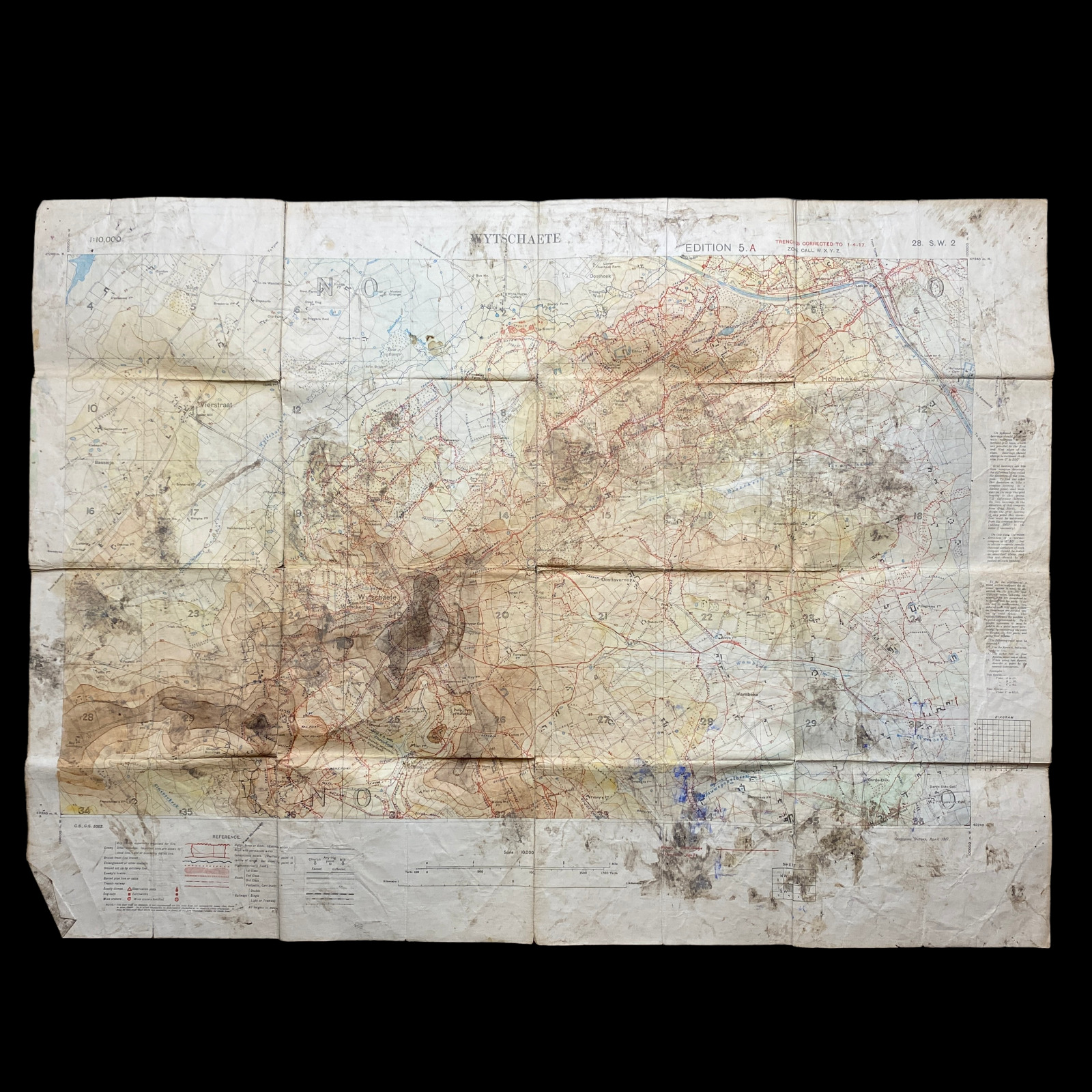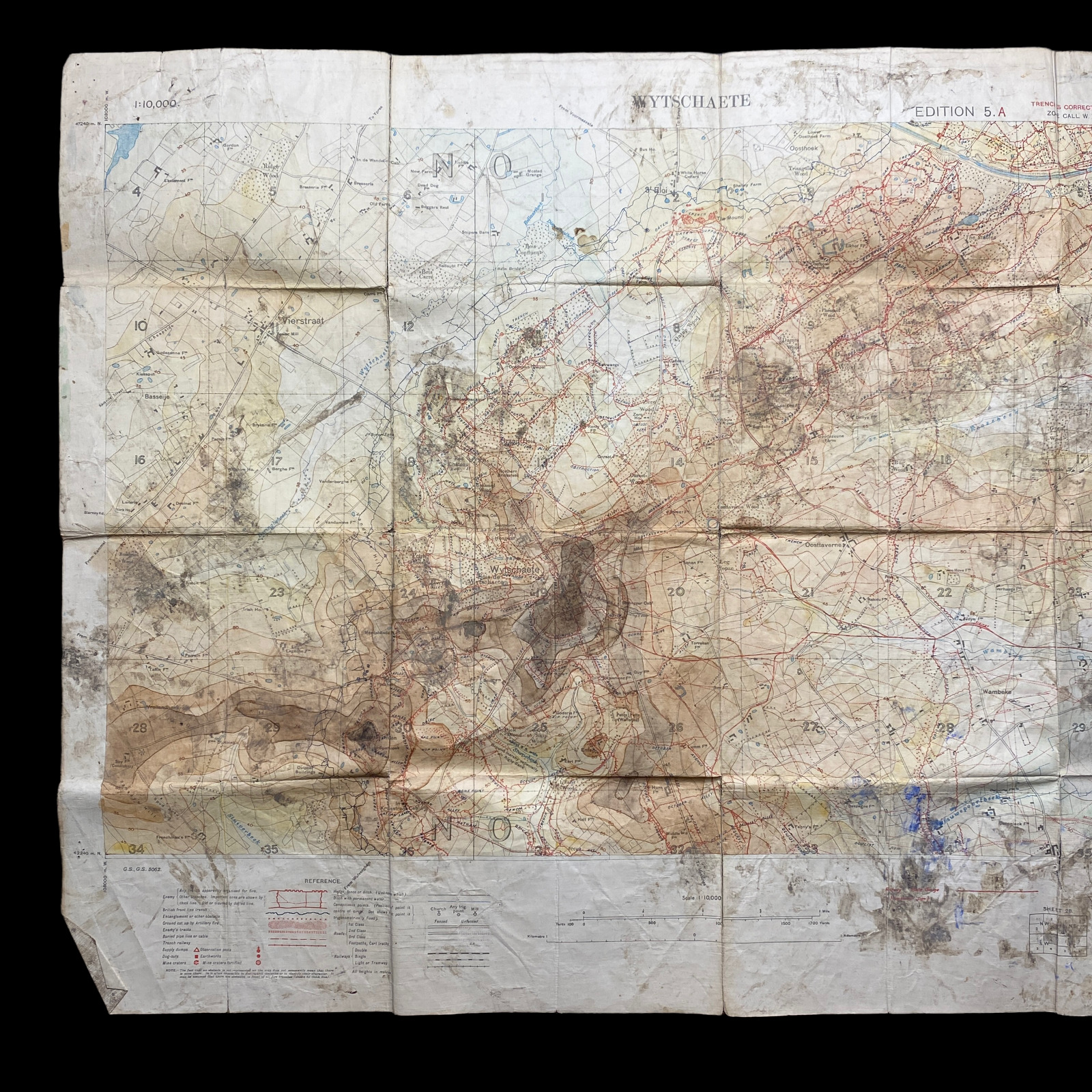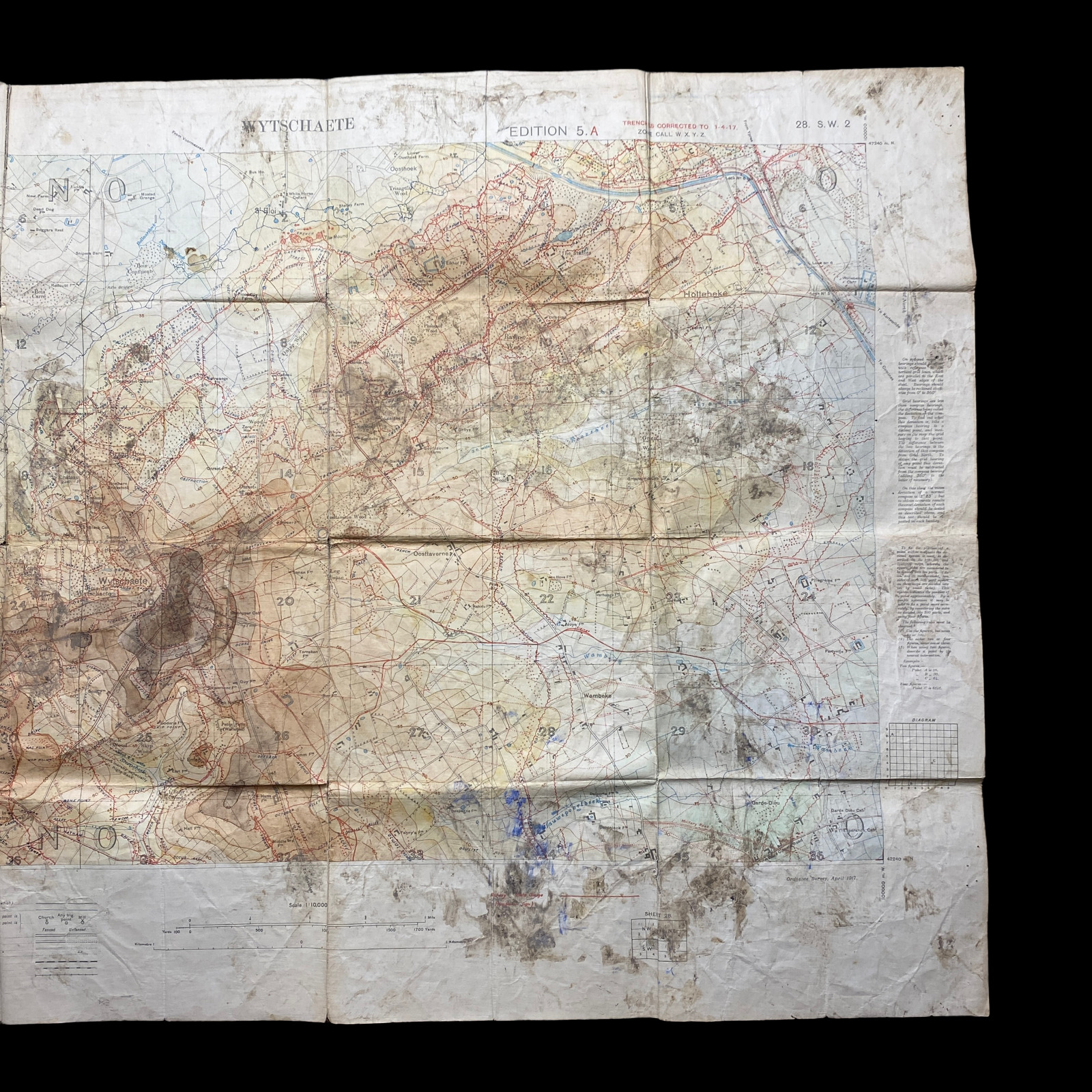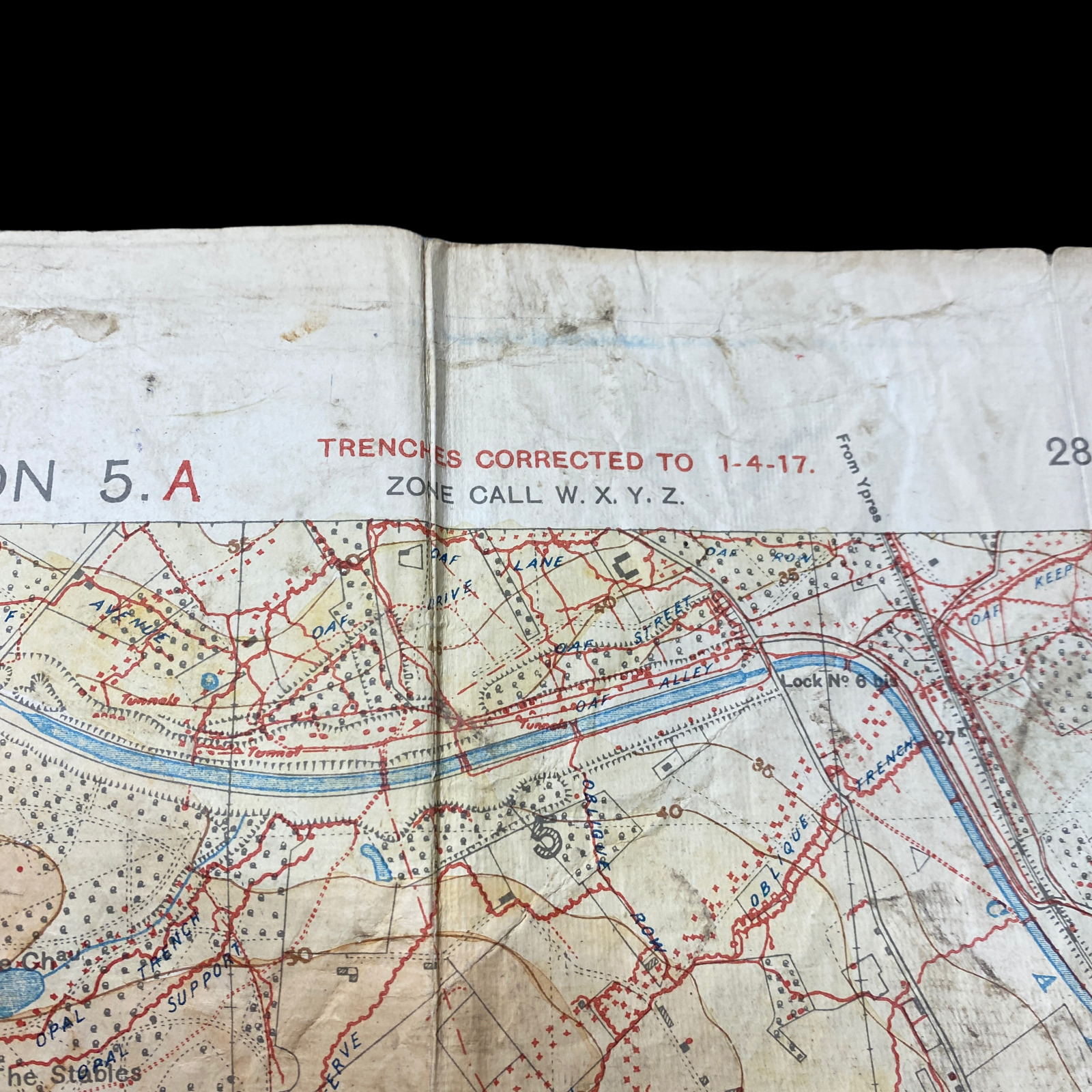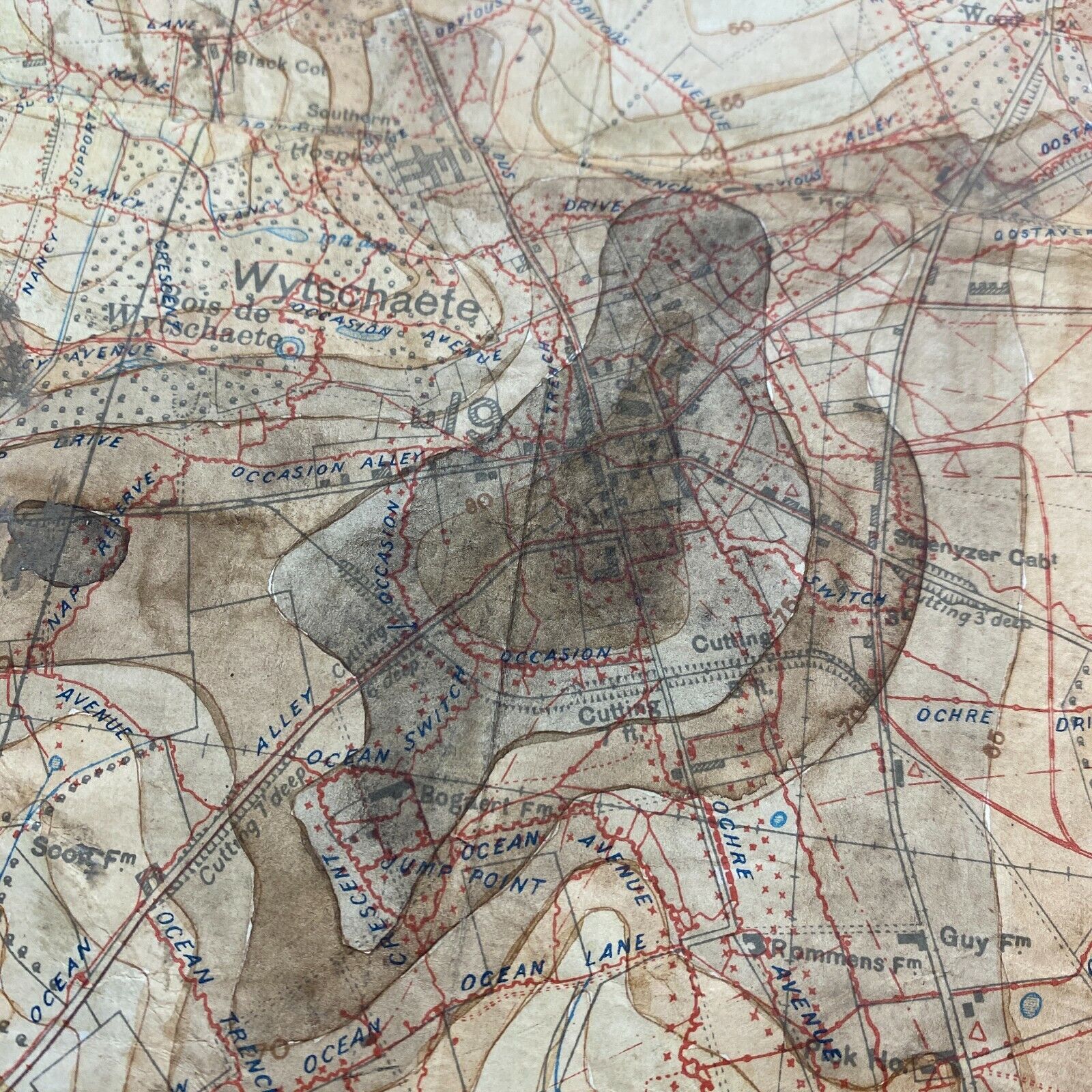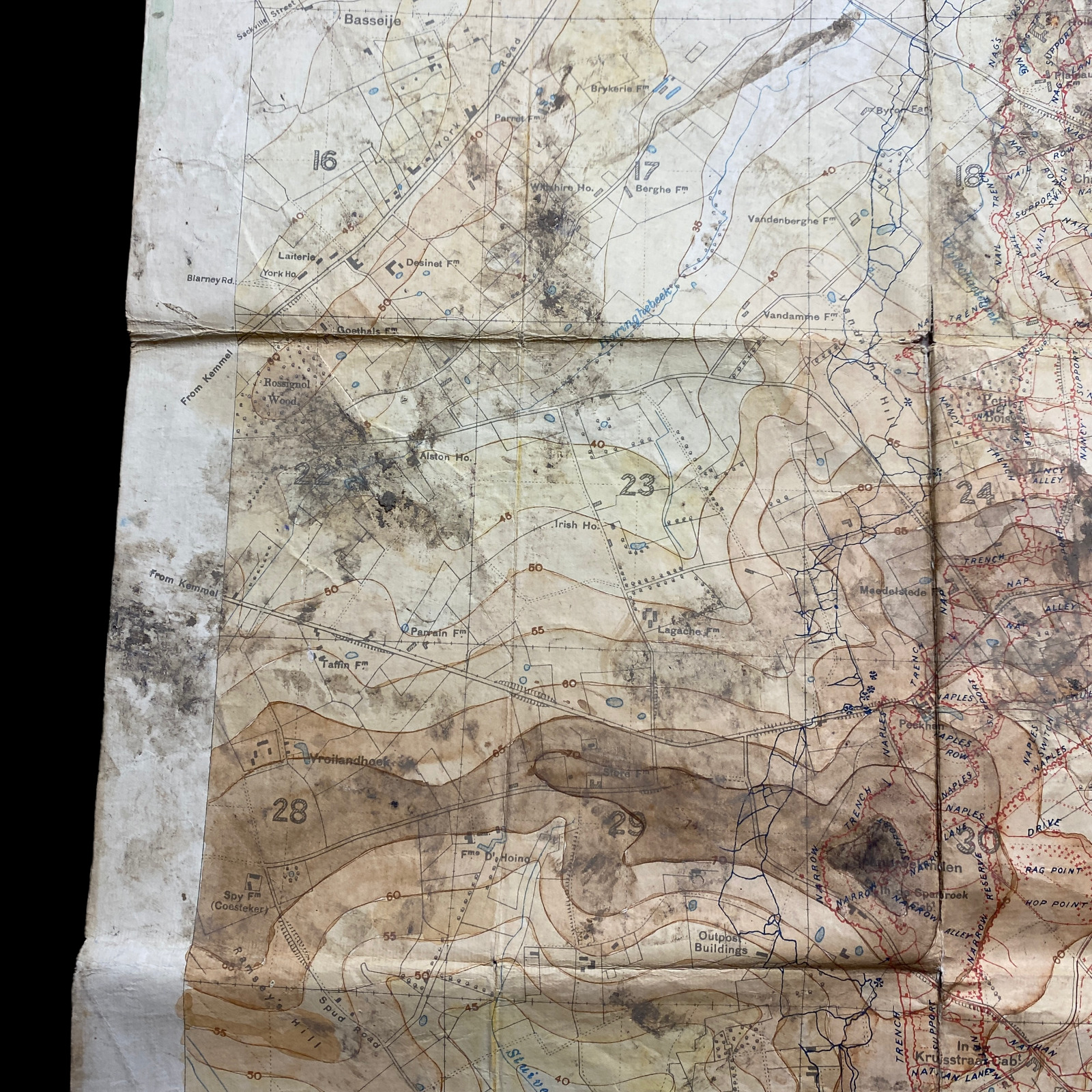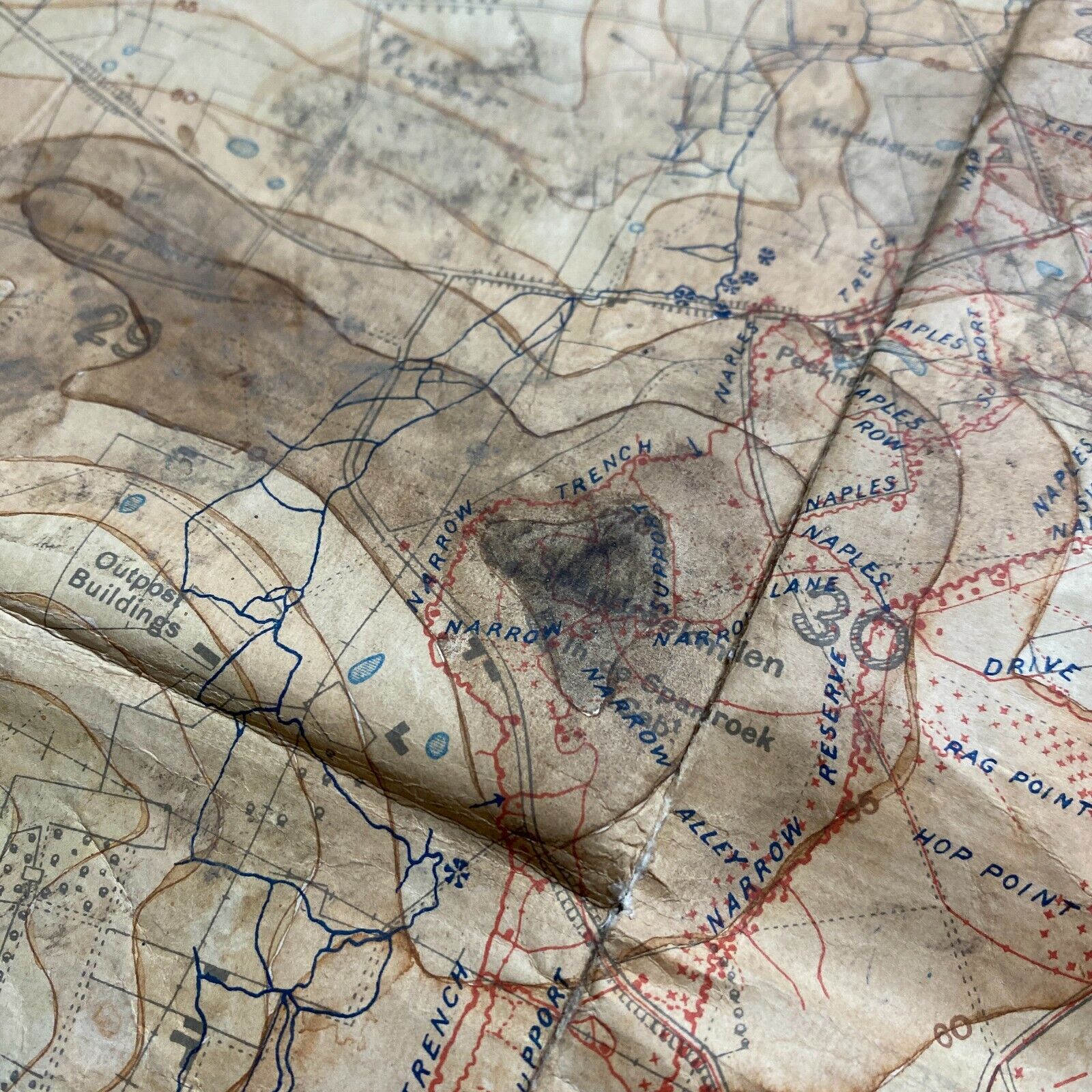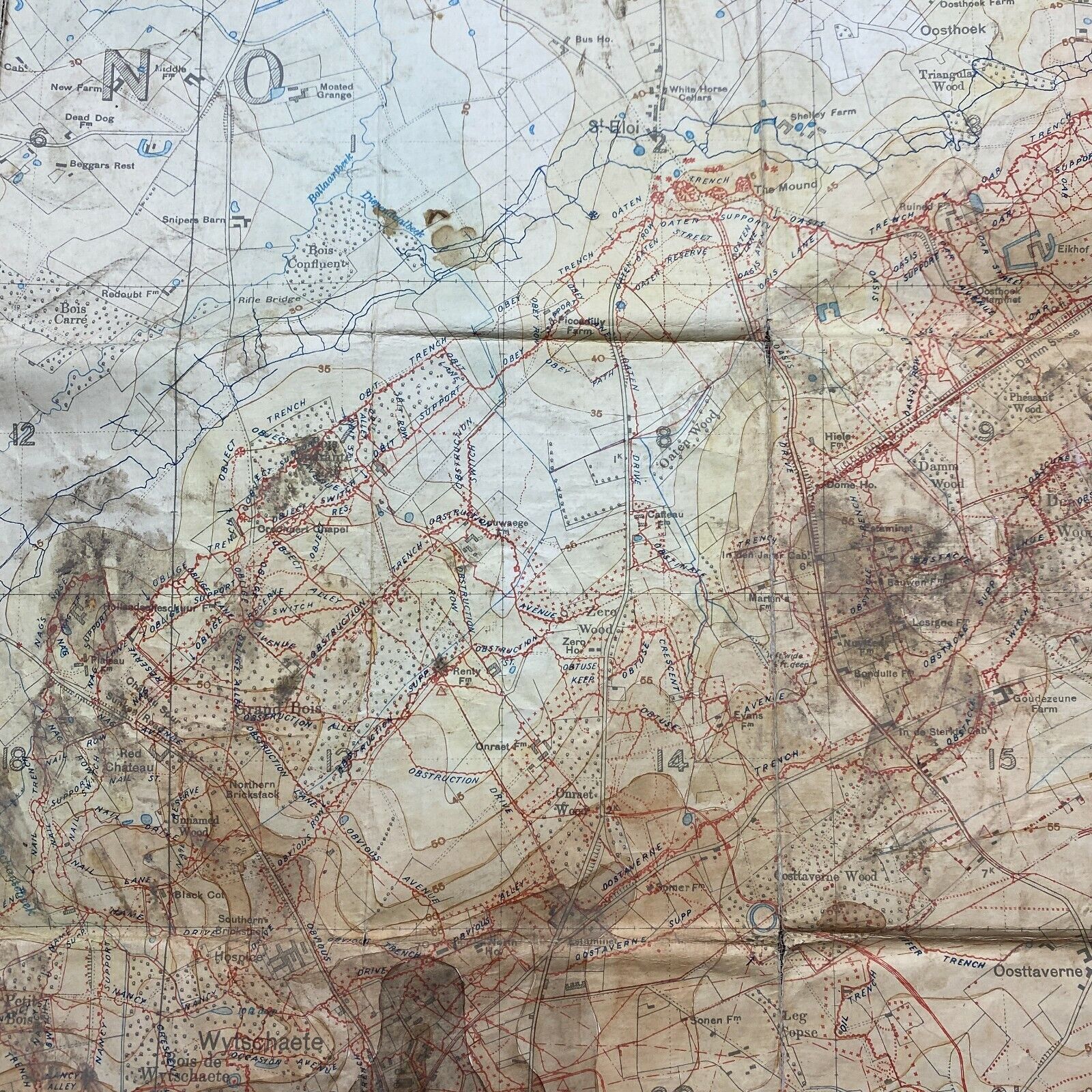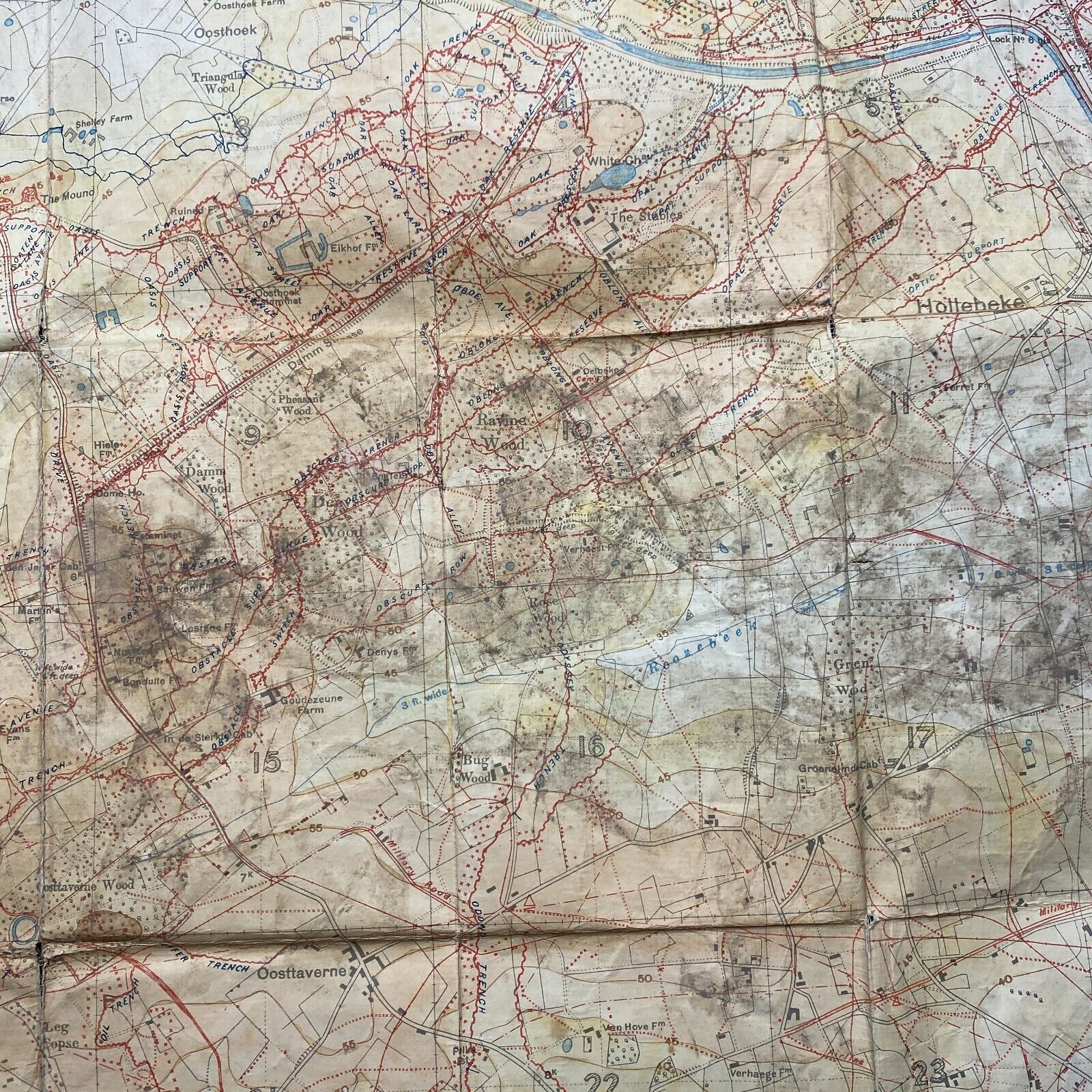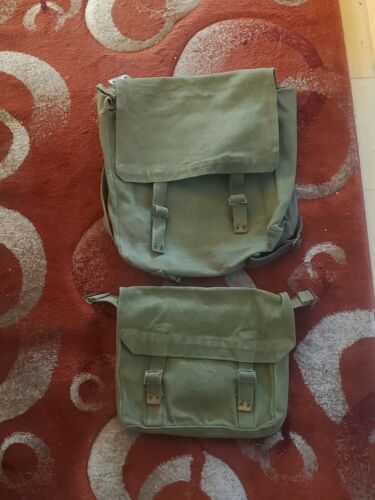-40%
RARE! WWI 1917 Battle of Messines British Expeditionary Force Marked Trench Map
$ 1795.2
- Description
- Size Guide
Description
Comes with hand-signed C.O.A.This incredibly rare and museum-grade WWI 1917 trench map was very heabily used during the famous “Capture of Wytschaete”. The Capture of Wytschaete was a tactical incident in the Battle of Messines (7–14 June 1917) on the Western Front during the First World War. On 7 June, the ridge was attacked by the British Second Army; the 36th (Ulster) Division and the 16th (Irish) Division of IX Corps captured the fortified village of Wytschaete on the plateau of Messines Ridge, which had been held by the German 4th Army since the First Battle of Ypres (19 October – 22 November 1914).
The Germans had spent two years fortifying the defences and the local commanders had been assured that British mining attempts had been defeated. The British attack at Messines was set for 7 June and the plan included the detonation of deep mines that had been laid under the German front position since 1915.
What makes this frontline B.E.F. trench map map so unqie is the intratice German trench system shown that marked “TRENCHES CORRECTED TO 1-4-17”. These red German corrected trenches are also further detailed with the BLUE marked British frontline marking, ENEMY TRACKS, MINE CRATERS, OBSERVATION POSTS, and GROUND CUT UP BY ARTLLERY FIRE.
What makes this map incredibly rare is that the elevation contours are hand painted and colored by a B.E.F. soldier for and even more detailed and accurate frontline map. This is almost rarely seen on trench map and is very scare to see. These contour colors are done throughout the entire Battle of Messines battlefield.
The map itself shows some of the most important towns and landmarks of the battle. This map features the locations of each of the 19 mines planted under German held territory where 10,000 German soldiers were killed instantly. Soldiers were ordered to attack even if all mines didn't explode. Artillery fire continued throughout the battle as infantry advanced with tank providing close support and flying aircraft flying over for support.
